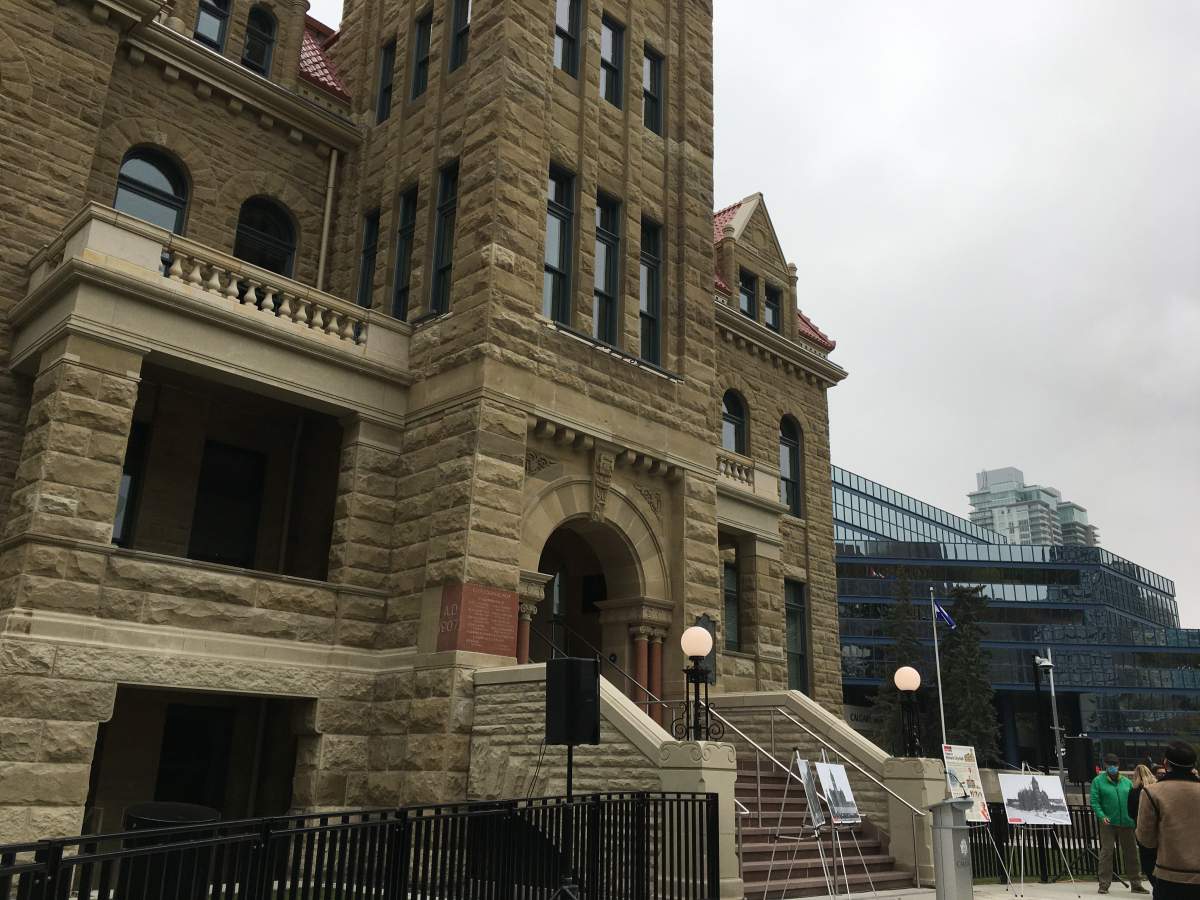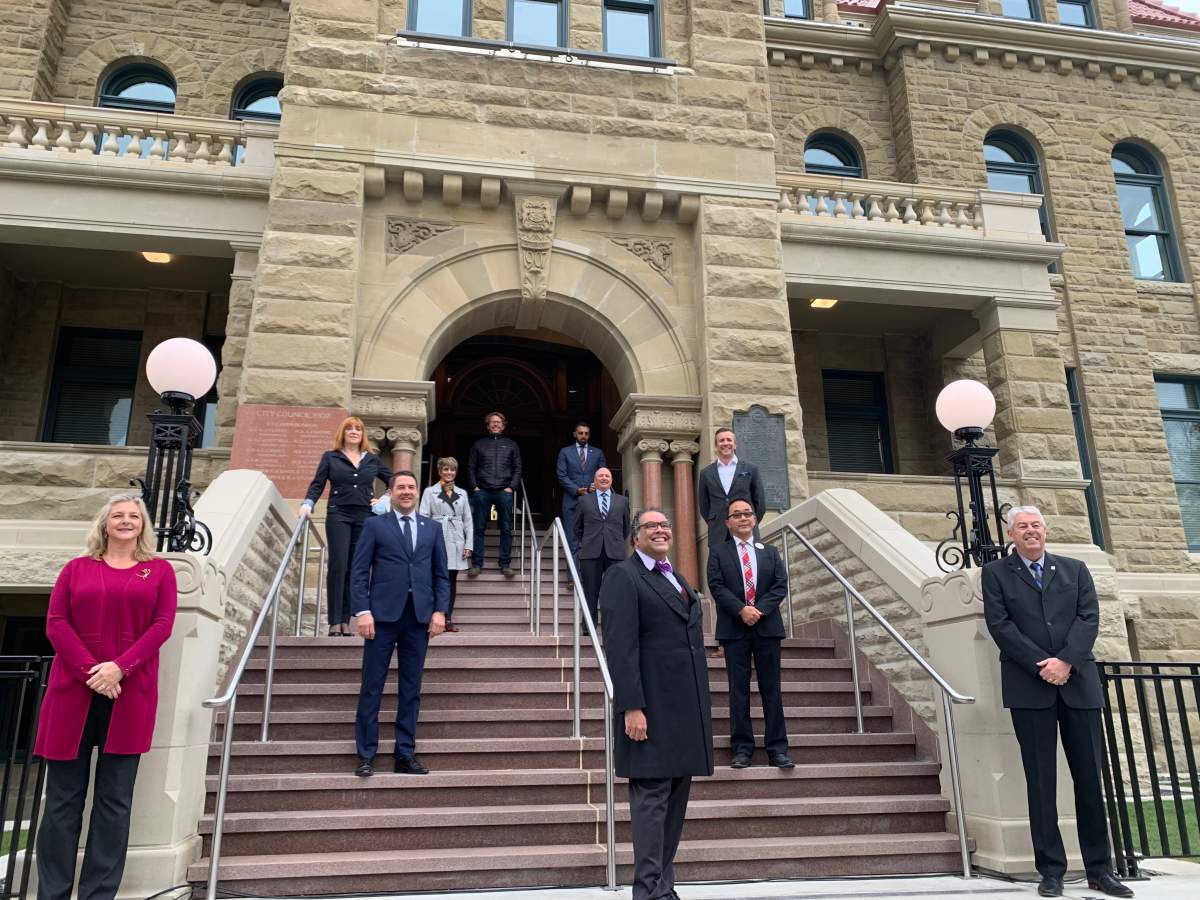Calgary’s historic city hall is open for business again after a three-year, $34.1-million restoration project.

The reopening comes 113 years after the cornerstone of the building was originally laid.
The project was originally approved in late 2015, with the old city hall going under wraps for renovation in May 2017.
Mayor Naheed Nenshi said the restoration team, led by Darrel Bell, treated it as a “labour of love.”

“This beautiful building is now 109 years old and is the only surviving city hall from its time in western Canada,” Bell said.
“It is a national, provincial and municipal heritage resource, and its rehabilitation has been one of the most significant heritage projects underway in Canada since 2016.”
Nenshi said he was pleased with how the renovations came out, and that they weren’t delayed by the onset of the COVID-19 pandemic late in the project.
“They brought it in using the mayor’s four favorite words: ‘on time, on budget.'”

Get daily National news
Heritage restoration
Bell said 97 per cent of the sandstone that made up the three-storey building and clock tower was repaired by either cleaning, structural repair, fortification or replacement. While it was clear where the stones had been replaced on Tuesday, the acting director of facility management told reporters that the shade of the new sandstone will match the older ones in a couple of years.
Part of the work included the integration of a rain collection and management system, directing rainwater away from the sandstone onto Macleod Trail.
All but two of the 191 original wooden windows were restored and preserved.
Other work included replacement of the roof, reinforcing verandas and balconies, and the building’s foundation and concrete has been renewed.
The forecourt facing Macleod Trail in front of the city hall mimics what was there when it opened in 1911.
“That was one of the goals we had,” Bell said.
“Rehabilitation is to renew or to bring it back to the original intent and purpose. And that’s why we have an open landscape and this landscaping plan. So it’s very original.”
The 100-foot clock tower was reinforced with steel to correct “leaning and widening issues.” And the encased clock has had some work done to it but the bell’s ring is off by five minutes as of the reopening.

“The intention was for the clock maker to come here, help us rebuild and calibrate it,” Bell said Tuesday.
“That has, unfortunately, because of the pandemic, not been able to happen. So we have been virtually teleconferencing with the clock maker to build it ourselves in the tower.”
The gathering was marked with nearly all in attendance wearing masks with the novel coronavirus pandemic being the second pandemic city hall has seen.
“It had been open for only seven years when the Spanish flu entered Calgary in 1918 with a group of World War One soldiers returning home from a train from the front lines,” acting city deputy manager Chris Arthurs said.
“Over the next two years, the Spanish flu ultimately took the lives of hundreds of Calgarians.”
Nenshi said the people involved in building the heritage city hall following the fire that wiped out the previous wooden town hall on that site “were making a bet” on the future of Calgary.
“They weren’t building for 1911. They were building for the future that they wanted to build for their children and their grandchildren. They were making a bet on the extraordinary future that would happen here in this community.”
- Unfortunate events turns Alberta family’s road trip into unforgettable one
- US forces stop 2nd oil tanker off Venezuela coast as Trump follows promise to seize tankers
- Land where Youville Residential School stood set to be sold, raises concerns
- ‘Completely unacceptable’: Alberta mall Santa replaced after boy slapped














Comments